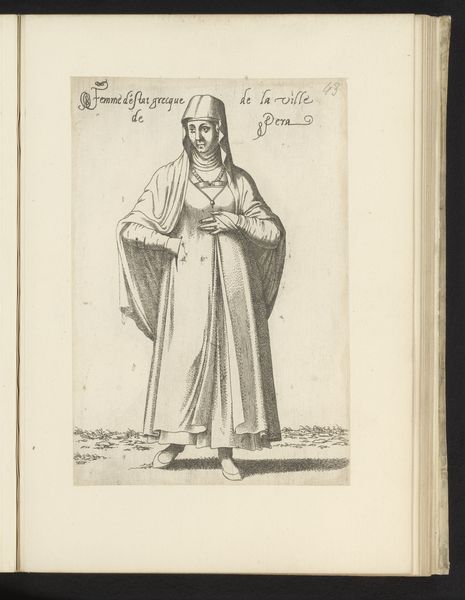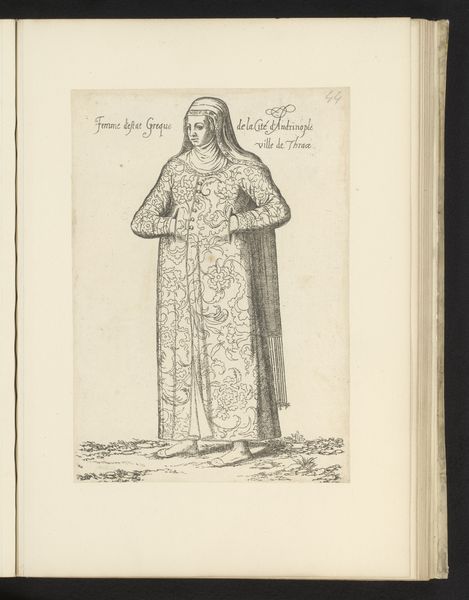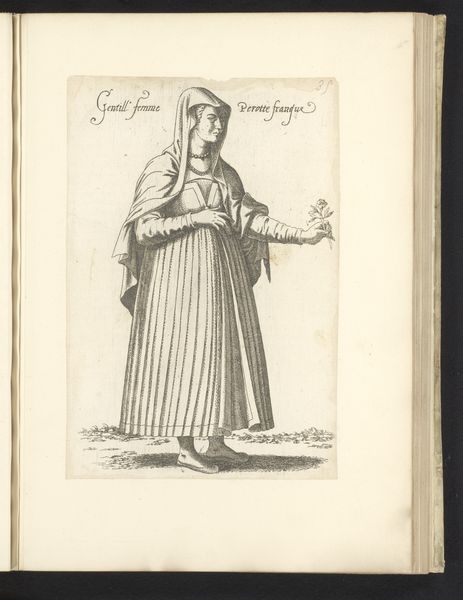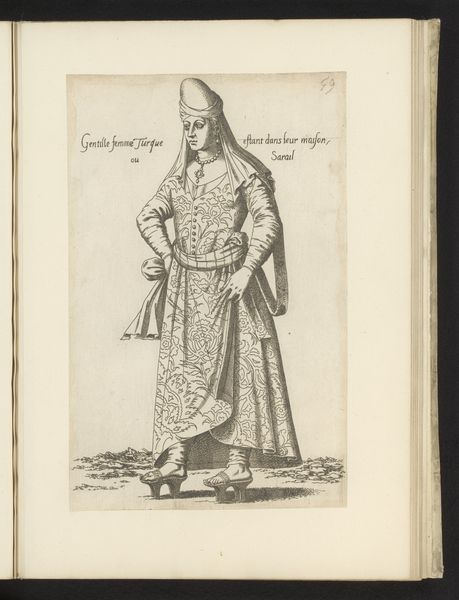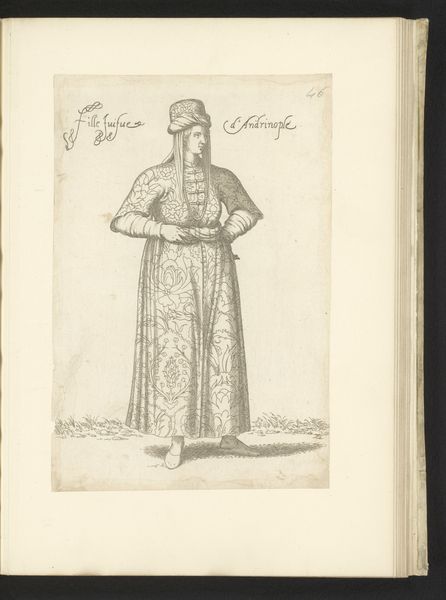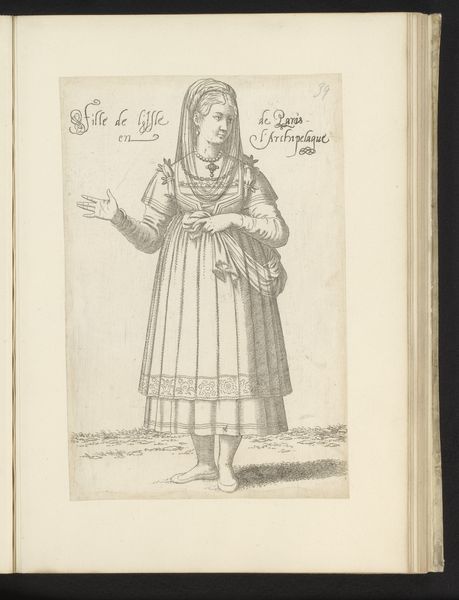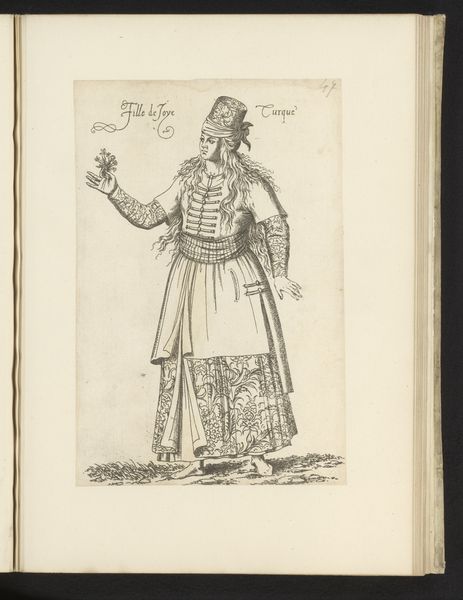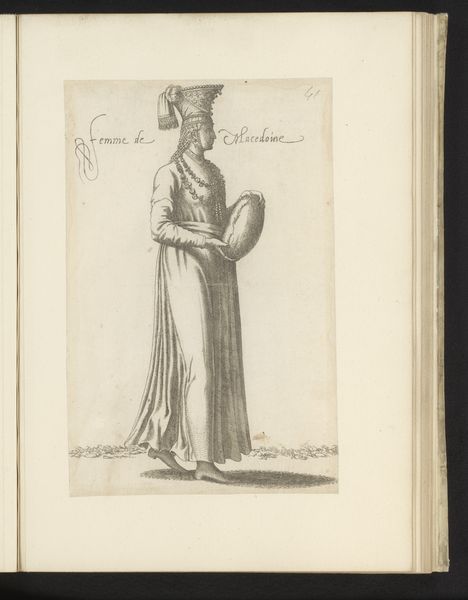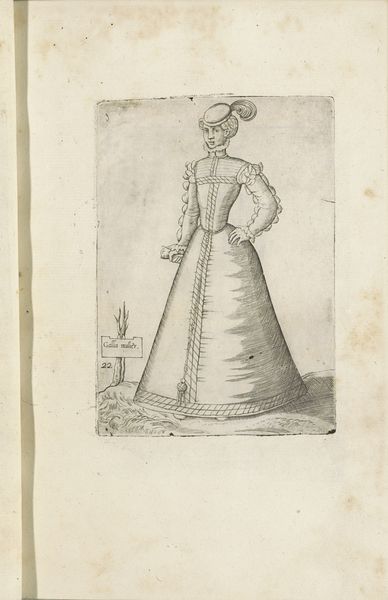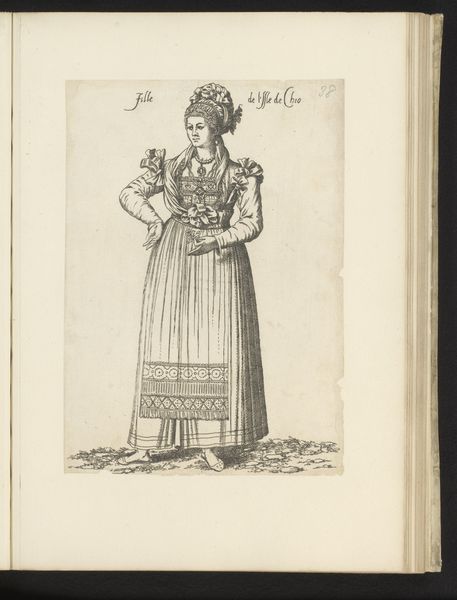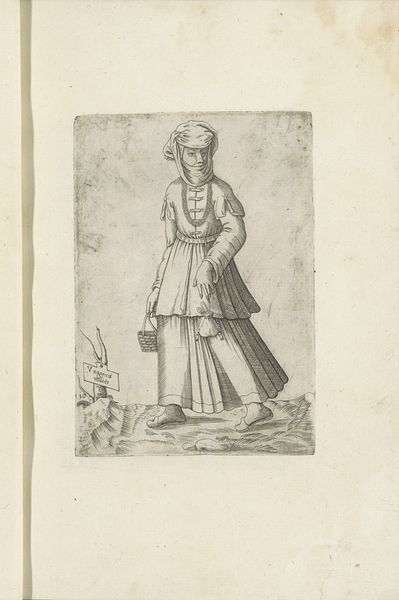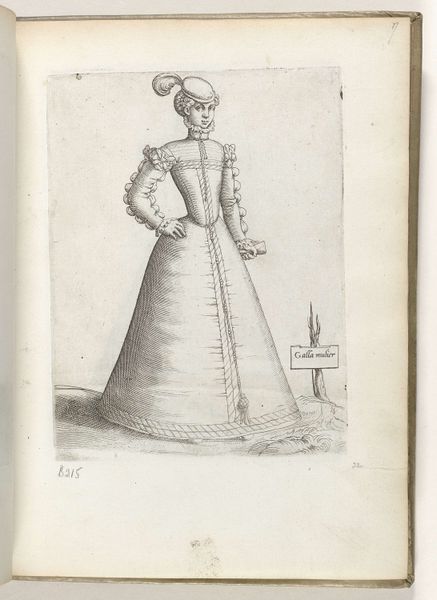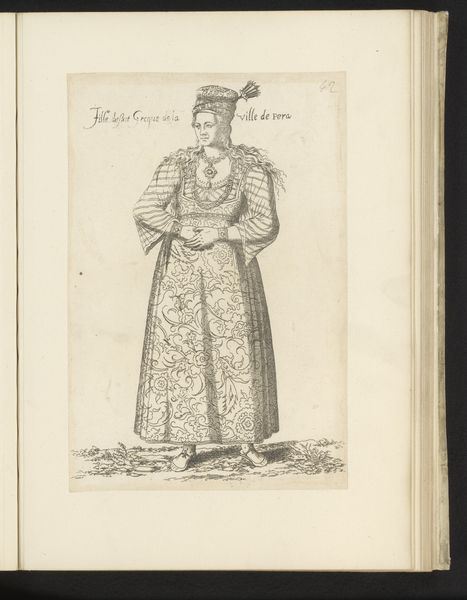
drawing, paper, ink, engraving
#
portrait
#
drawing
#
medieval
#
paper
#
11_renaissance
#
ink
#
history-painting
#
engraving
Dimensions: height 258 mm, width 174 mm
Copyright: Rijks Museum: Open Domain
Editor: Here we have a 16th-century engraving entitled "Turkse edelvrouw" by Léon Davent, rendered in ink on paper. The woman’s garments are exquisitely detailed, yet her gaze is so direct; it's a striking contrast. What can you tell me about its historical context? Curator: It is interesting to consider this work as an example of early modern European engagement with the Ottoman Empire. Consider that this piece emerges during a period of intense political and cultural exchange, frequently fraught, but also defined by trade and diplomacy. The "exotic" was often represented and consumed. What effect do you think such a detailed, yet distanced, portrayal might have on its viewers? Editor: It presents this figure, both empowered and distant, which must have been intentional. Were these engravings widely circulated, then, shaping perceptions? Curator: Absolutely. Prints like this served as vital visual documents, especially before photography. They provided a window, albeit a mediated one, into cultures and societies beyond Europe. But were these accurate depictions? Or were they tailored for specific audiences, catering to particular expectations about the ‘Other’? Editor: That's a great question. The term ‘Turkse edelvrouw’ itself seems laden with assumptions, immediately positioning the subject within a European framework. So this image actively participated in defining and shaping that period's socio-political context. It reflects power dynamics more than reality, doesn’t it? Curator: Precisely. Recognizing how the work engages with prevailing social narratives reveals it not as a mere record, but an active agent within cultural discourse. It highlights the complex relationship between art, representation, and socio-political forces at play during the Renaissance. Editor: That gives me a richer appreciation for this work, realizing how representation is never neutral but tied to its historical and social moment. Thanks! Curator: And understanding the agency of images, how they not just reflect but actively shape social reality, that's truly invaluable.
Comments
No comments
Be the first to comment and join the conversation on the ultimate creative platform.
